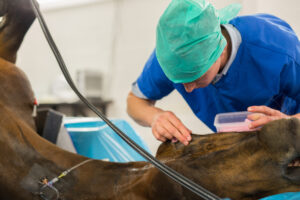As pets age or go through intense physical activity, they can develop various injuries or illnesses that range from simple wounds to more complicated and chronic conditions. These issues can impact their quality of life and prevent them from engaging in their favorite activities. Veterinary medicine has come a long way, and with modern science, there are innovative approaches to healing that utilize the body’s natural abilities to regenerate and heal itself, known as regenerative medicine.
Regenerative veterinary medicine refers to therapies that utilize the animal’s own cells to regenerate tissue, bones, and organs. The primary areas of focus for regenerative veterinary medicine include the restoration of joint health, tissue healing, wound repair, and immune modulation. In this approach, the animal’s body is encouraged to harness its natural healing process to repair tissues and organs that have been damaged due to injury or illness.
Here are three types of regenerative medicine:
Stem Cells
One of the most commonly used techniques in the veterinary field involving regenerative medicine is using stem cells to promote tissue and bone repair. These cells, which are sourced from the pet’s own body fat, bone marrow, or blood, can differentiate into various cell types to aid in repair. In the damaged area, the stem cells signal the body to promote healing, resulting in a faster and more efficient healing process.
Stem cell therapy has numerous benefits for animals. This technique has been proven to be an effective way to help rebuild cartilage in arthritic joints, ease pain, and improve animal mobility. Stem cells also promote tissue repair, which can help to heal chronic wounds quickly. Moreover, this approach can boost an animal’s immune system, resulting in better overall health.
Platelet-Rich Plasma (PRP)
Another technique used in regenerative veterinary medicine is Platelet-Rich Plasma (PRP). PRP is a concentrated form of the animal’s blood, especially dense with their own platelets, that contains many important growth factors. These growth factors aid in tissue repair and stimulate the production of new cells, resulting in faster healing. PRP has been proven to be an effective way in some cases to reduce inflammation, reduce pain, and improve mobility in animals with osteoarthritis. It can also be used to promote bone healing after a fracture or surgery.
Immune Modulation
Immunomodulators have used in veterinary medicine for over 50 years and are used to modulate the animal’s immune system. This approach helps to strengthen the body’s natural defenses, reducing its susceptibility to disease and infection. Some common medications are used to manage allergic dermatitis or treat immune disorders.
New advancements are being made with immune modulators in nutrition for pets and in cancer treatments.
Regenerative veterinary medicine is a promising approach to animal health care. It utilizes the body’s natural ability to heal itself, resulting in faster healing times and improved overall health for your pet. As much as there have been innovations and studies in the area, more research is still needed to ensure the efficacy of these treatments and their long-term effectiveness.
In conclusion, regenerative veterinary medicine is a powerful new technique that encourages the body’s natural healing process and promotes long-term health. As a result, pets may be able to live happier and healthier lives, free from pain and complications. By exploring this innovative approach, pet owners and veterinarians can provide their companion animals with the latest advancements in medical care and improve their overall wellbeing.
Image credit: JPRFPhotos / Shutterstock




